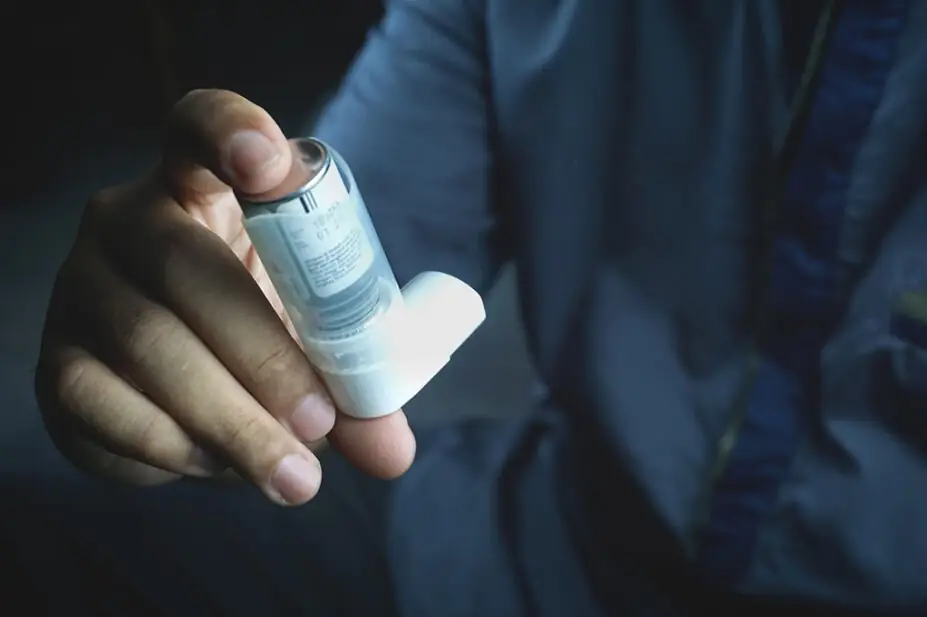
Shutterstock.com
The Medicines and Healthcare products Regulatory Agency (MHRA) has approved what it says is the world’s first low-carbon version of Trixeo Aerosphere (Astra Zeneca), a triple combination inhaler for adults with moderate-to-severe COPD.
The newly approved version of Trixeo Aerosphere will replace the propellant HFA-134a with HFO-1234ze(E) — a fluorinated gas with “near-zero global warming potential”.
In a press release, published on 12 May 2025, the MHRA described it as “just as safe and effective as the previous version” and said that clinical evidence indicated that the new propellant delivered the same dose and therapeutic effect as the original formulation.
No changes have been made to the active ingredients, recommended dose or clinical use.
The MHRA said the new version will be available in the UK from the “second half of 2025”, but the current version will continue to be available to patients in the meantime.
The NHS has estimated that around 3% of all its greenhouse gas emissions are produced by inhalers prescribed for respiratory conditions.
Data also show that COPD affects around 1.2 million people in the UK, with more than one-third of patients with COPD (39%) estimated to use pressurised metered-dose inhalers (pMDIs), which often have a higher carbon footprint than dry powder inhalers (DPIs) and soft mist inhalers (SMIs).
Trixeo Aerosphere is used twice daily as a long-term maintenance treatment to improve symptoms of COPD, such as shortness of breath, wheezing and cough, and prevent flare-ups.
Darush Attar-Zadeh, a clinical fellow respiratory pharmacist at North West London Integrated Care Board, described the news as “very welcome” and a “significant step forward”.
“I look forward to seeing more low-carbon options becoming available across other commonly prescribed inhalers for COPD and asthma. While there has been a growing drive to switch patients to DPIs, which can be beneficial for some, it’s important to recognise that MDIs — especially when used with a spacer — remain the most suitable and preferred option for many individuals,” he said.
“Optimising inhaler technique and involving people in shared decision-making about their care is absolutely vital. It would be ideal to reach a point where clinicians no longer need to weigh the environmental impact of an inhaler as a key consideration, but can instead focus solely on selecting the device that offers the greatest benefit to the person living with a lung condition.”
Toby Capstick, a consultant pharmacist in respiratory medicine at Leeds Teaching Hospitals NHS Trust, also said that the approval of HFO-1234ze(E) as the first low-carbon next generation propellant represented “a major step forward for patients and the planet”.
He highlighted that while many people can use lower-carbon DPIs, there are also patients who do not have the inspiratory capacity — including many people with COPD.
“The approval of Trixeo [Aerosphere] is the first step on the journey to having low-carbon pMDIs available for our patients with COPD, and we expect that more low-carbon pMDIs will follow over the next few years. It is great news that we will be able to start prescribing pMDIs for patients who can only use these devices in the knowledge that we are able to make the right clinical decisions and not have such a big impact on the carbon footprint from our inhaler prescribing,” he said.
Andrew Whittamore, clinical lead at Asthma + Lung UK, said: “Inhalers account for 3-4% of the NHS’s total carbon footprint and the new Trixeo Aerosphere propellant is over 200 times less damaging to the environment when compared to the previous propellant.
“This is the first inhaler to switch to lower-carbon propellants. As more inhalers come to market with newer propellants, we will see a significant reduction in the carbon footprint of inhalers.”
The provision of greener pMDIs for respiratory conditions could save 619,000 tonnes of carbon emissions in the UK each year, according to a report by the Office of Health Economics (OHE) published in February 2025.
A £33m joint investment between the government and Kindeva Drug Delivery is ongoing to develop low-carbon MDIs for asthma and COPD.
In April 2025, health minister Karin Smyth revealed that NHS England is also assessing the possibility of rolling out a national inhaler recycling scheme.


